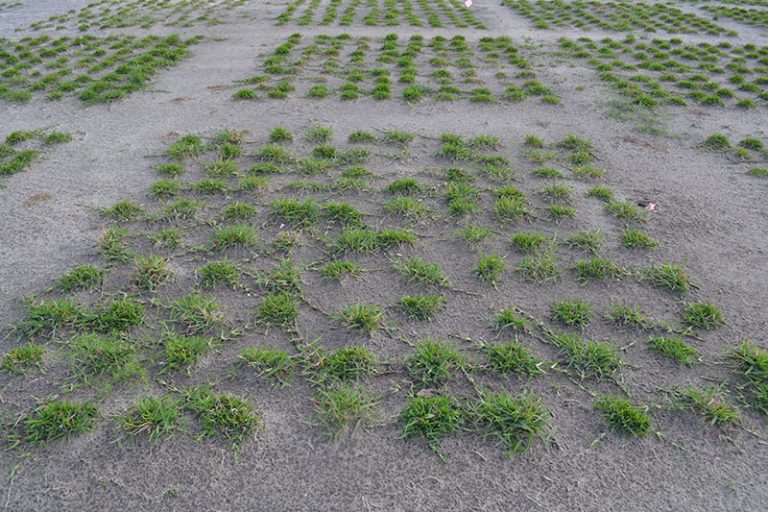University of Florida research has determined that lawns containing a mix of turf varieties maintained their aesthetic quality longer than lawns with just a single variety. They are better at managing disease and pests.
This reduces the need for pesticides, which lowers the environmental impact and financial cost of maintaining turf, said Adam Dale, senior author of the study and assistant professor in the UF/IFAS entomology and nematology department.
“Our study was based on the premise that increasing the genetic diversity of turfgrass within a lawn will make that lawn more resilient to stress without sacrificing the lawn aesthetic,” Dale said.
Today, most lawns are planted with just one variety of a given turfgrass species. These varieties are different versions of the same species that have been bred to have specific traits. These cultivated traits are linked to the way the plant looks or responds to different pests or stresses.

Photo courtesy of Adam Dale
While these traits give each variety its own advantages, their genetic uniformity has a downside.
“If a given variety is susceptible to a disease or insect pest, and the whole lawn is composed of that variety, then the whole lawn is vulnerable to damage if that disease or pest moves in,” Dale said.
For example, ‘Floratam’ is a variety of St. Augustinegrass, a grass species used in many Florida lawns and across the southern United States. ‘Floratam’ dies when infected with a virus called sugarcane mosaic virus.
“Our current understanding is that all other St. Augustinegrass cultivars can survive sugarcane mosaic virus, and current recommendations include replanting dead ‘Floratam’ with a different cultivar of St. Augustinegrass,” Dale explained. “If these lawns were initially planted as cultivar blends, then our study suggests that, if infected with the virus, these lawns would not be as vulnerable to the virus and may not need to be replanted because the other cultivars present in the blend would survive and grow in where the ‘Floratam’ died.”
In their four-year study, the researchers planted several plots with either a mix of two or four St. Augustinegrass varieties, or just one variety. Over the study period, the scientists took high resolution photos and drone images of each plot and used a special computer program to measure the turf’s color, density, uniformity and overall quality.
Plots looked and performed the same early in the study, regardless of the number of cultivars in a plot. However, after multiple years of research, plots that contained a mix of varieties maintained their density and quality. They also looked better than the plots containing only one variety.
The blended plots outshined their monoculture counterparts because, as a whole, they were less affected by any single pest or disease issue, the researchers explained.
“To the untrained eye, the plots in our study all look like St. Augustinegrass,” he said.
The research team is now working on developing recommendations for planting specific variety blends and testing how different blends perform in different parts of the Southeast over time.
“We are hoping that this follow-up study can help us identify regional cultivar blend recommendations,” Dale said.










